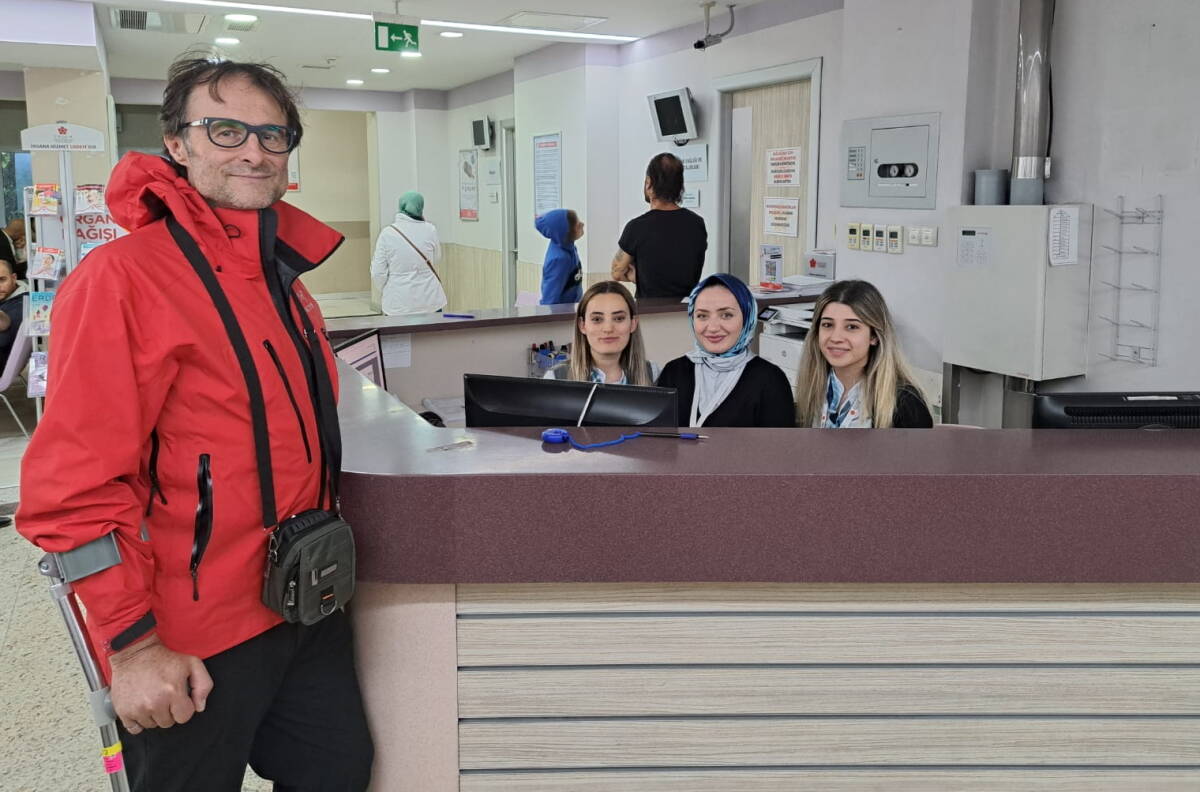In late August I fell while walking my dog. Kai is a fierce puller.
My guard was down as it was late and we were both tired. A dog in a passing truck barked. Kai took off. In a second we were going warp speed. Another second later, I found myself splat on the ground, a sharp pain in my left knee.
I stumbled home. Later, I drove myself to Stanton Territorial Hospital’s emergency department. After waiting for two medevacs to be dealt with first, I saw a doctor, who twisted and prodded my knee. He confidently declared that I had a bad muscle strain and would be fine in a couple weeks. No X-ray, no crutches, no recovery plan, other than, “Get some rest, put some ice on it, and take ibuprofen to keep the inflammation down.”
A few days later, I tripped on uneven pavement and came crashing down again. The pain was excruciating. I revisited the emergency department and saw a different doctor. She twisted and prodded, ordered an X-ray (saw no cracks), and came to the same conclusion as the first doctor. She put me on crutches, told me to lay low for at least five days to rest the joint, and referred me to physiotherapy.
Several days later I was on an 11-hour direct flight from Vancouver to Türkiye (formerly spelled Turkey) on Turkish Airlines for a previously arranged visit. My kids are there learning the language and experiencing a different culture, and my wife is reconnecting with family after many years in Canada. She has been considering possibly starting a medical travel business in Istanbul. Little did I know that I would be client number one.
We went to a private hospital down the road. Within a couple of hours, I was in the office of a highly regarded orthopedic surgeon. He twisted and prodded and, in good English, said, “You likely have a fracture and a ligament issue.” An hour later I had an X-ray and MRI. The next day I saw the surgeon again. The test results confirmed a small crack in my fibula and a slight tear in my posterior cruciate ligament. He recommended I stay on crutches, get a fancy knee brace and take some prescription meds for a week to get the still-there inflammation down. Total cost for all this? Under $400, including the brace.

It’s been a little over three weeks since my first visit to the orthopedic surgeon. Ever friendly, courteous, kind, thoughtful and professional, he concluded that I had made great progress, but still had a distance to go. He adjusted my brace to a full range of motion and prescribed a series of physiotherapy exercises. He gave me a timeline for getting off the crutches (this week), losing the brace (after three weeks), and explained what exercises to do and not do (swimming, bicycling and very light jogging good; skiing bad; parachuting crazy).
When I return to Türkiye in January to revisit my family, I will see the surgeon again. He’ll do a follow up MRI, if needed, but hopefully not. I asked about the possibility of stem cell treatment to speed up healing (a Canadian friend living in Colombia had gotten it for chronic wrist pain and noticed significant improvement almost right away). “Wait and see until after January, we can cross that bridge then,” the doctor advised. More surprisingly, when I asked where to get it, he smiled and said, “I could take care of that for you.” It’s a quick procedure that takes less than an hour. The stem cells (using Italian technology and cells from my stomach area) would be injected right into my knee for less than $900.
More and more people are looking overseas for medical treatments, cosmetic surgery, hair transplants, etc., and Türkiye is a prime destination. Why? Because the expertise is there, the facilities great, the service couldn’t be much better, and perhaps most importantly, it’s much more affordable than similar treatments in Canada, or even Colombia, which while still cheaper than Canada can be more expensive than Türkiye.
So what is the moral of this story? It’s not that Canadian medical care is necessarily bad. That would be totally unfair. There are many great doctors and nurses in Canada offering perfectly acceptable medical care. Could it be better or faster? Sure, of course, there’s always room for improvement in any large system. In the meantime, if you’re tired of waiting to get the help you need, and you can afford to explore other safe and high-quality options in Türkiye, or elsewhere, it’s a perfectly good option to consider. For our politicians and medical administrators trying to figure out how to improve a medical system itself needing some care, it wouldn’t hurt you to see what the rest of the world is doing. We’ve definitely got some lessons to learn.
—Michael Gannon is a Yellowknife lawyer currently visiting Türkiye.
